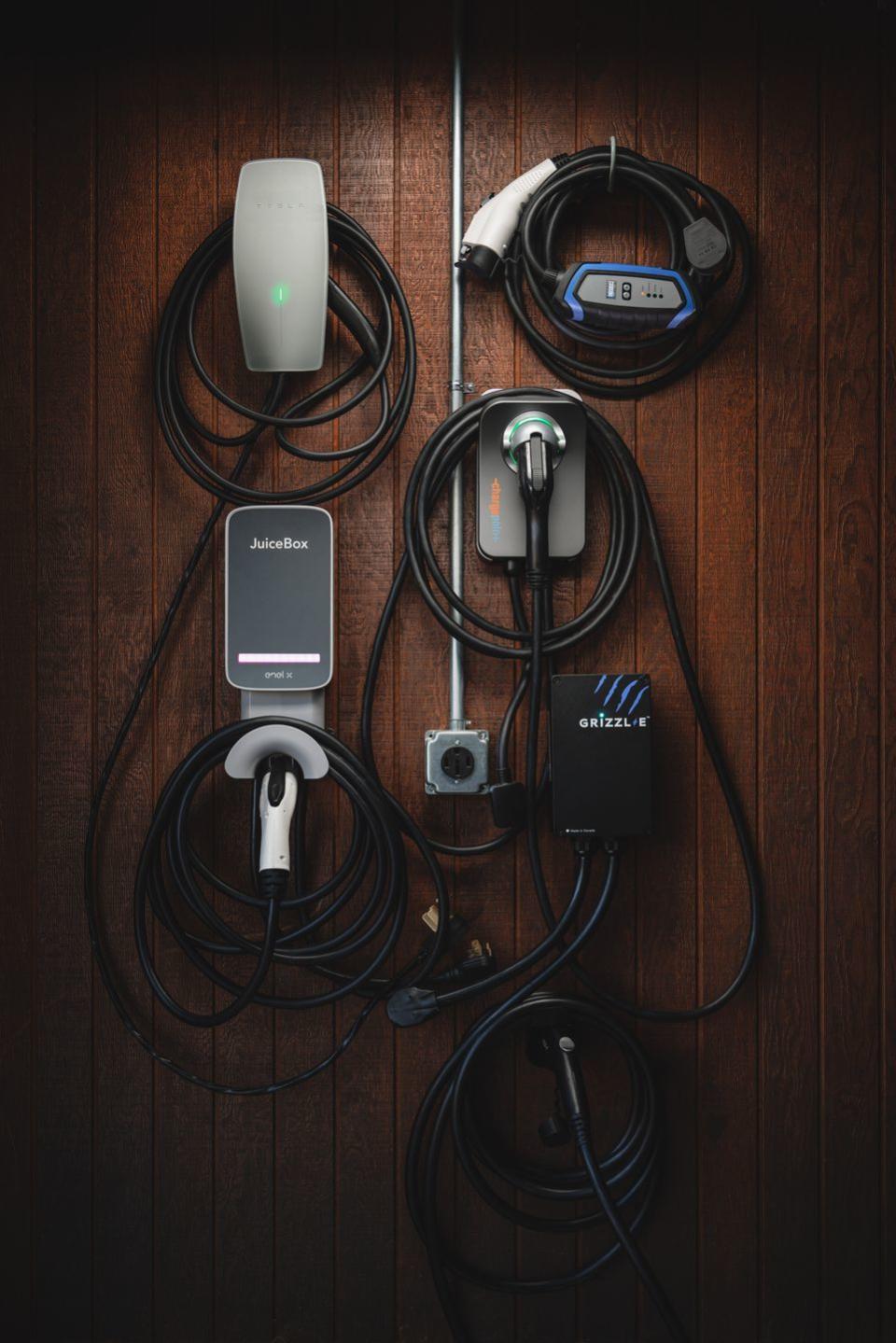Different Levels of EV Charging

You don't need a degree in rocket science to charge an electric vehicle. Plugging in an EV to charge is no more difficult than fueling a gas-powered car. That said, things can get a bit confusing if you begin digging into the weeds of the different charging equipment and speeds. Jargon such as SAE J1772, DC fast-charging, or Level 1 and 2 chargers can make replenishing the charge of your EV's battery seem far more complicated than it is. With that in mind, we've taken the time to break things down for you by explaining the basics of EV charging and the various "Levels" associated with it.
Electric Vehicle Charging Levels
The Society of Automotive Engineers outlines three levels of EV charging: Level 1, Level 2, and Level 3. The one you use at a given time could depend on a few factors, such as your home's electrical system and the makeup of available public chargers in a given locality.
Level 1
Automakers often include Level 1 charging equipment with new electric cars. This device plugs into a typical household 120V outlet. The ubiquity of these ordinary household outlets makes Level 1 charging incredibly convenient, even if this type of charging replenishes your car's battery pack at a very slow rate. Plan on seeing your EV add around two to four miles of range per hour, depending on the efficiency of your specific battery-powered car, truck, or SUV. This type of charging is much slower, far less efficient, and will cost you more than Level 2.
Level 1 alone won't be enough to keep up with the charging needs of most EV owners. That said, if you only drive 20 miles or so each day, perhaps you could get by with Level 1 only. One quick point of caution: Never plug your Level 1 charger's cord into an extension cord, as the wire's additional length creates resistance that may overheat the extension cord and could also cause the charging equipment to fault out and stop charging.

Level 2
Level 2 charging operates at 240 volts and typically at three to four times the amperage of a lesser Level 1 unit. As such, the majority of Level 2 units add electricity to your EV's battery pack at a rate that's roughly six to eight times faster than Level 1 setups, equating to 12–32 miles of driving range for each hour of charging.
But the charging rate of Level 2 can vary quite dramatically. A typical 240-volt, 24-amp unit can put out about 6.0 kW of continuous power. But the fastest possible Level 2 charging is at 80 amps, or 19.2 kW, which is more than three times faster. The hardware on your car dictates the maximum Level 2 charge rate, and most cars aren't capable of charging at 19.2 kW, so you'll want to match your charging equipment to what your EV can handle to avoid paying for capability you can't use.
We recommend that any EV owner install Level 2 charging at home. If your EV's supplied or optionally available charging cord is incompatible with a 240-volt outlet, you will need to purchase dedicated Level 2 charging equipment for your home. You may also need to add electrical capacity to your home. Consult an electrician to ensure your home's electric panel is up to the task.

 Yahoo Autos
Yahoo Autos 